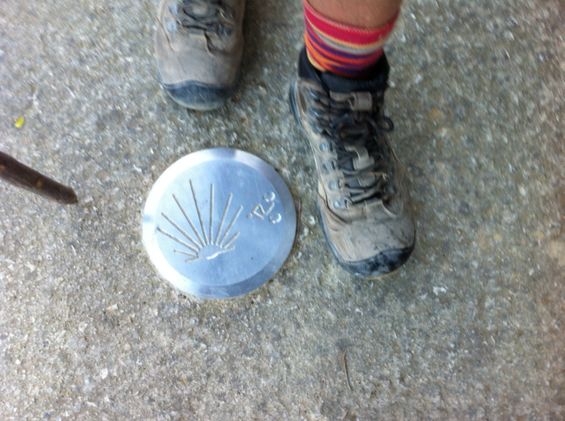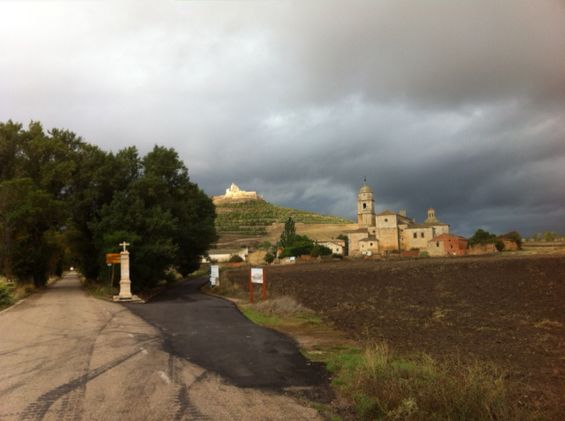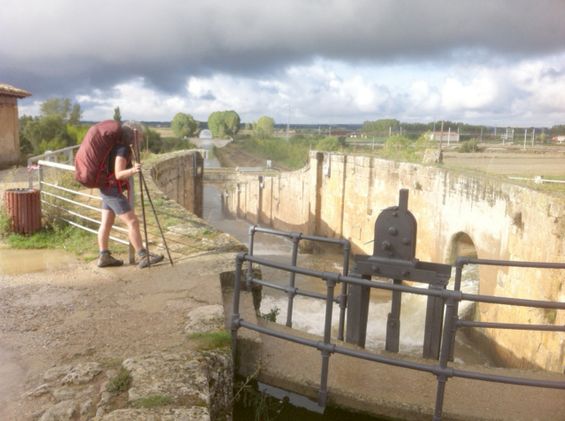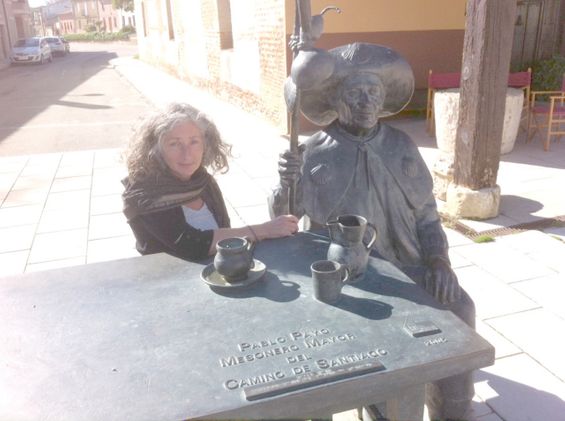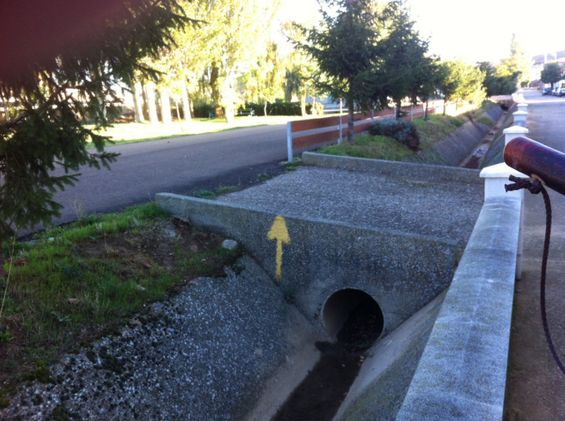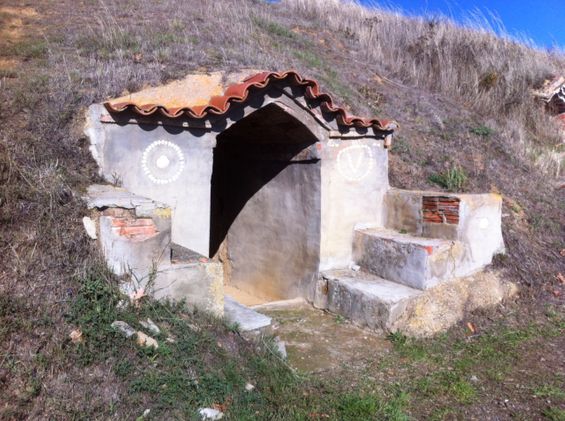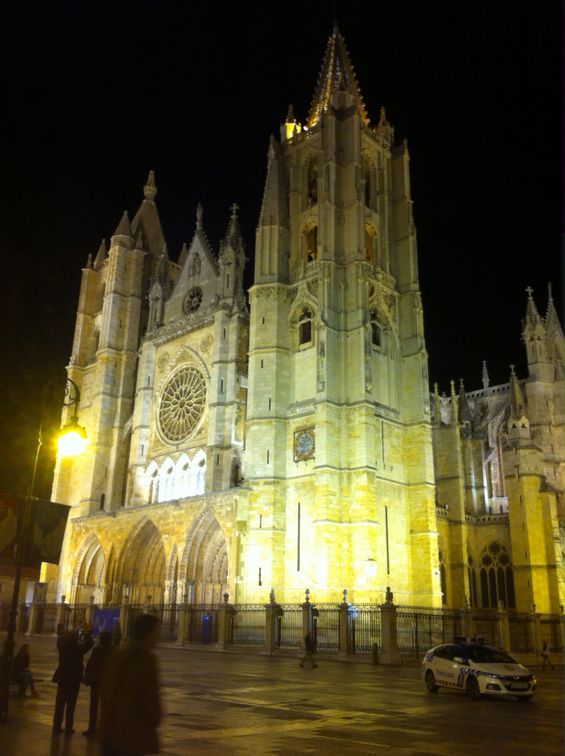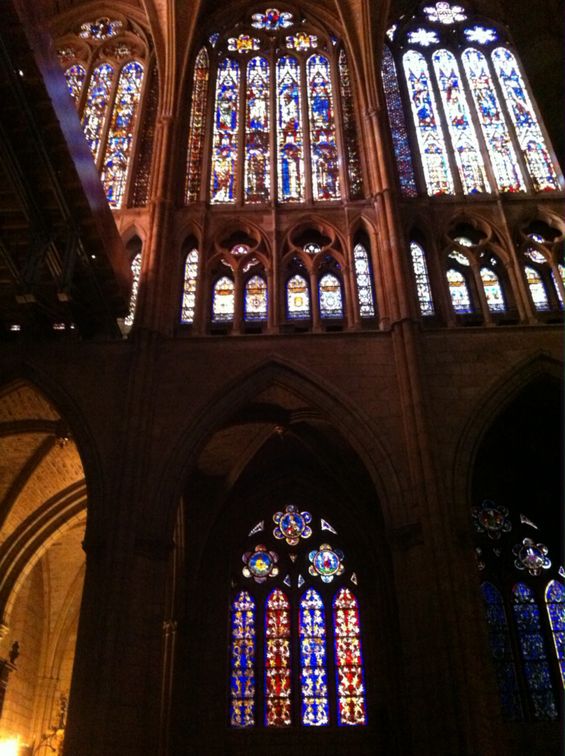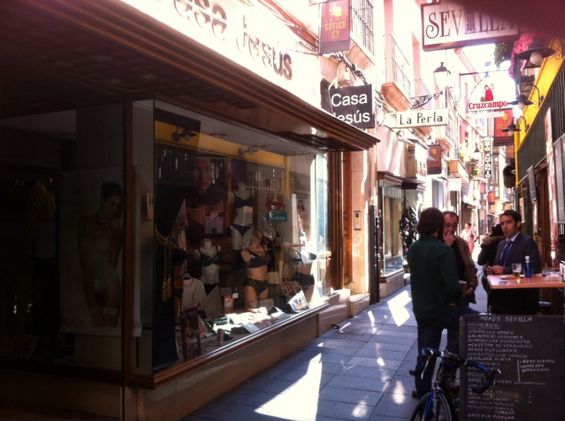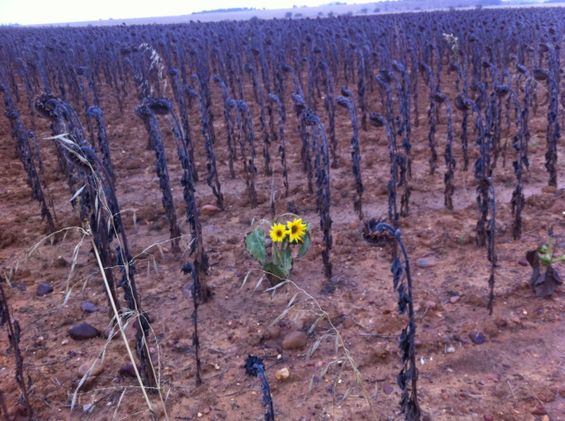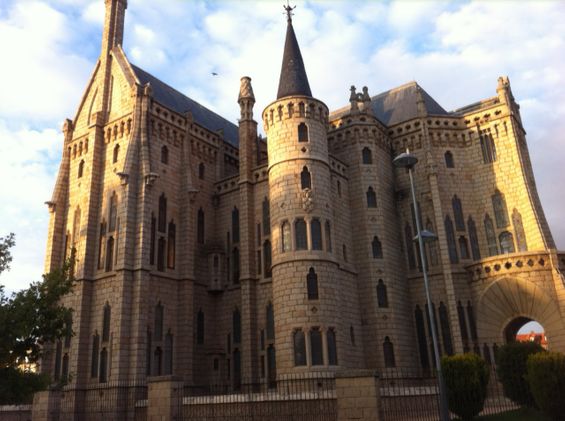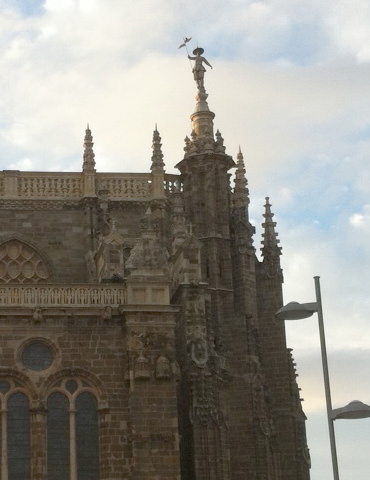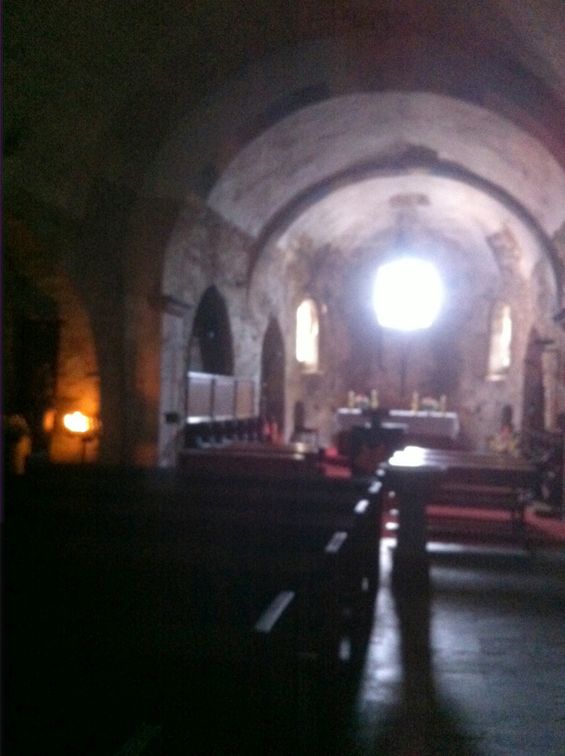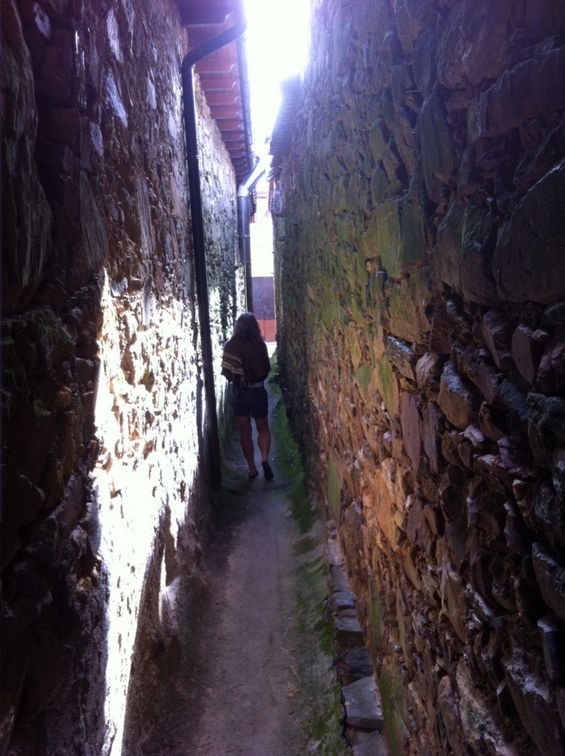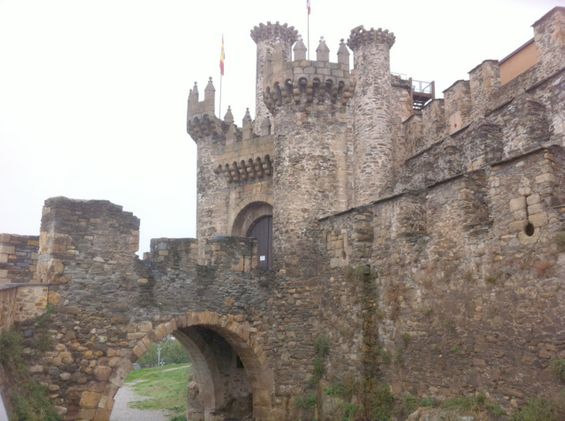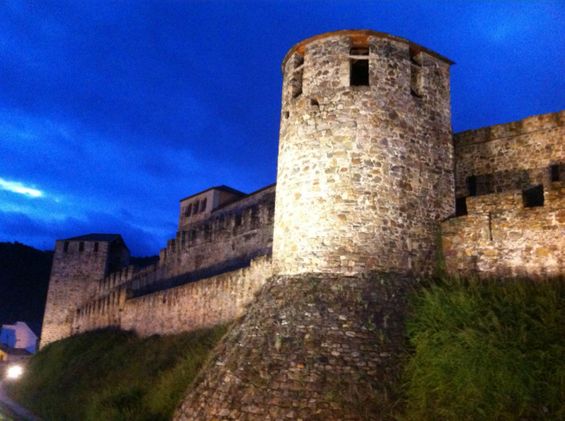Camino, Oct 2013(a)
Marker 1 - there are markers and signs all along the el Camino to help keep the perigrinos on the Way.
Marker 2
Marker 3
Castrojeriz - where we found some rain pants for Roxanne.
Leaving Castrojeriz
Lots of rainy days this week. Here is Roxanne crossing one of the locks on a canal we followed for a day.
Roxanne hanging out with another perigrino.
Marker4
Marker5 - by far, the most common marker in Spain is a painted yellow arrow - on walls, roads, rocks, trees ...
Wine cave
León cathedral. We sat outside on a narrow little street with almost this view, eating dinner. Dinner doesn't start until at least 8:00 pm - tricky if you're planning to get up and walk the next day before sunrise.
In the "my cathedral is bigger than your cathedral" race, León decided to be the "stained-glass king". They have more stained glass than any other cathedral. In fact, they put in so many stained glass windows (125) that the walls started to cave in - once in the 17th century and again in the 19th century. To compensate for this, there are now steel struts spanning the church to avoid killing all of the befuddled peregrinos below. I was puzzled about this'exhuberance' until I ran across an interesting historical note in my guidebook: "One of the chief functions of the medieval church was to instruct the illiterate and to give them pictures that they could understand..." This seemingly reasonable strategy apparently devolved over time...
Casa Jesús. This shop sells Victoria's Secret-style lady's underwear...
León window view
A rainy day, slogging across northern Spain. Then we spotted these two sunflowers just blooming, after all their buddies had died - how inspirational - something like, "march to the beat of your own drummer"! We were all excited, until the next bar/cafe' where we stopped to warm up. Ten minutes later, a gaggle of Spanish women showed up, one clutching these two flowers!?!?! That kind of messed up the moral of the story we were going with....!
Roxanne walking across the Puente de Órbigo, one of the longest and best preserved medieval bridges in Spain (dating from the 13th century and built over an earlier Roman bridge). Here's an interesting historical note about this bridge and (about how silly men can be) from the year 1434: "A noble knight from León, Don Suero de Quiñones, scorned by a beautiful lady, threw down the gauntlet to any knight who dared to pass as he undertook to defend the bridge (and presumably his honour) against all comers. Knights from all over Europe took up the challenge. Don Suero successfully defended the bridge for a month until the required 300 lances had been broken. Together with his trusted comrades he then proceeded to Santiago to offer thanks for his freedom from the bonds of love and for his honour, now restored!"
The Bishop's Palace in Atorga, designed by Gaudi (from which we get the word 'gaudy').
Right beside the Gaudi building is the Catedral St. Marta. Here is a photo of the back part, with their depiction of presumably the Tin Man from the Wizard of Oz. If the Gaudi building was considered gaudy, what category could possibly include this...?
Peace. One of the most meditative churches we found so far, in a small town called Rabanal del Camino. we lit five candles, our Mothers, Rox's Dad, a dear friend, and you!
Candles
Hidden passages. We haven't written much about what we're experiencing, because it's very difficult to put into words. We notice that we are getting stronger, healthier and quieter. It's probably pointless to even try to put words on this type of experience, but we see the changes.
Mountains - if you look carefully, there is a little village in the gap in the clouds...
Castillo de los Templarios (Castle of the Knights Templar) in Ponferrada. The Knights Templar were among the most wealthy and powerful of the Western Christian military orders and were among the most prominent actors of the Christian finance - i.e., they lent money to various kings and nobles to finance their wars. Officially endorsed by the Catholic Church around 1129, the Order became a favoured charity throughout Christendom and grew rapidly in membership, money and power. Templar Knights, in their distinctive white mantles with a red cross, were among the most skilled fighting units of the Crusades, while the non-combatant members of the Order managed their large banking system. King Philip IV of France was deeply in debt to the Order, and came up with an interesting way to clear his debts. In 1307, many of the Order's members in France were arrested, tortured into giving false confessions, and then burned at the stake. Under pressure from King Philip, Pope Clement V disbanded the Order in 1312 (after originally declaring, truthfully, that the Knights were innocent!)
Castillo de los Templarios at night. Running out of room on this page - please go to "el Camino,Oct-Part2"


